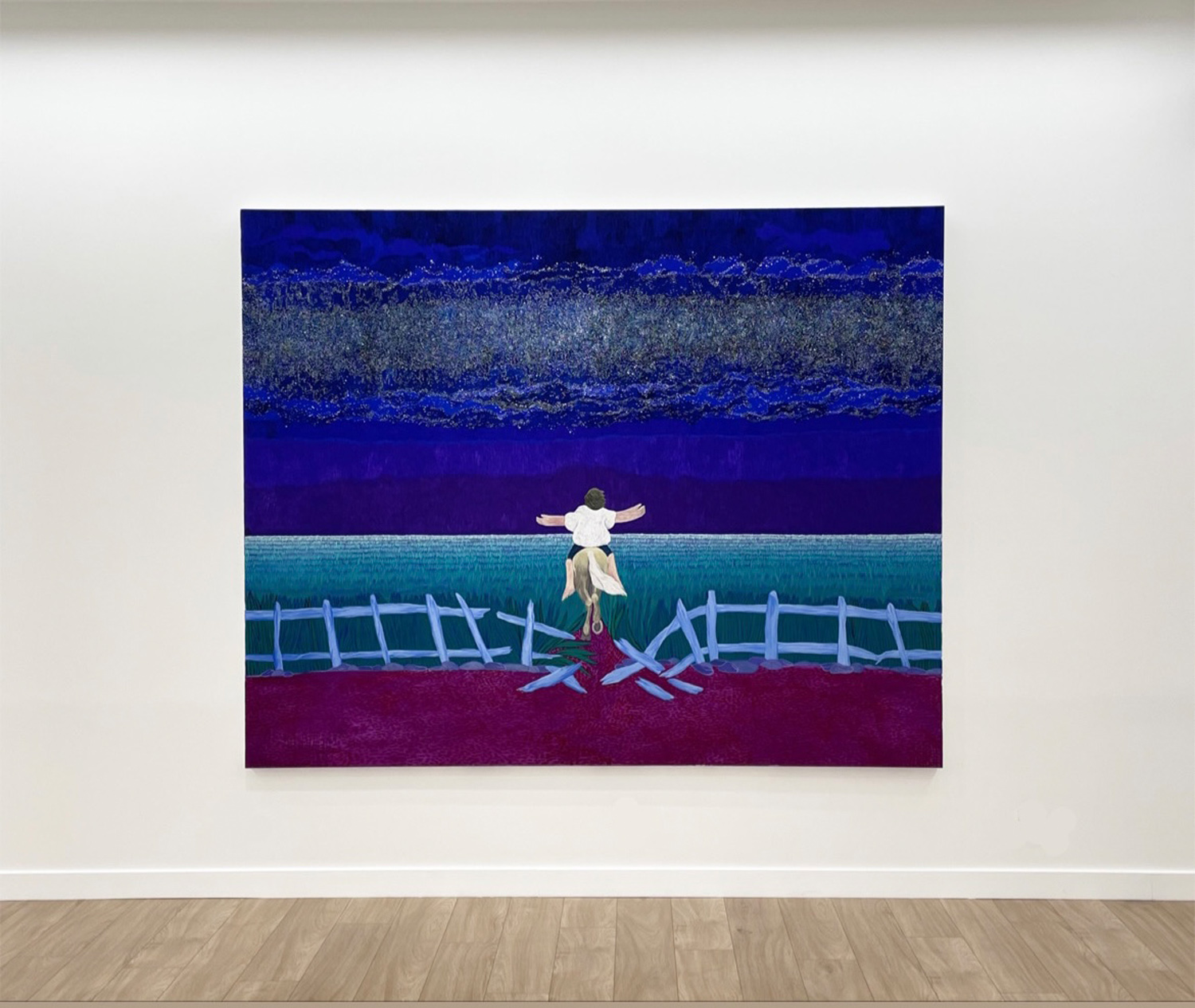DUMONTEIL is pleased to present Les Mondes Flottants, the solo exhibition of Tess DUMON at DUMONTEIL Contemporary Paris. The exhibition title is from the Japanese word Ukiyo-e, which refers to the impermanence of the material world in the Buddhist tradition and the multiple artistic variations that it inspires Japanese poets and printmakers. The novelist Asai Ryoi was the first to use the term ukiyo in 1661, when he defined it as “living only for the moment, contemplating the moon, the snow, the cherry blossoms and the autumn leaves...”. Following in Ryoi’s footsteps, Tess Dumon invites us through her new works to explore the emotional and poetic richness of ephemeral moments, many of which are drawn from her personal experience.
Tess Dumon’s art practice is related to her personal experience and childhood memoires; it transcends into intriguing stories that every viewer can somehow relate to or resonate with. Horse is a recurring theme in Dumon's artworks; it refers to the horse therapy sessions that her autistic brother received. The latter is also omnipresent in Tess Dumon’s work as a mysterious young man. The figures of the boy and the horse symbolize moments of peace and grace in a life hardened by illness. The disproportionate size of the boy's hands is a metaphor for the wings of an angel.
In reference to the Japanese Ukiyo, Tess Dumon’s latest paintings are imbued with a nostalgia, through night landscapes where the milky way rubs shoulders with rivers and trees (“If Trees Could Talk”), fields (“Les Immortelles”) and the sea (“Midnight Treasure”).
The ultramarine blue and violet tones that dot the canvases reinforce their ethereal atmosphere and make them appear like fleeting memories. In “Midnight Treasure”, for example, the boy holds a piece of polished green found on the sand in his hand: the artist invites us to remember our childhood wonders through him. This nostalgia can also take a melancholic turn, as in the painting “Wish You Were Here”, where it is illustrated from the perspective of loss. Here too, Tess Dumon plays on the contrast between the fleeting memory that has faded too quickly and the eternal beauty.
Tess Dumon draws her inspiration from literature, poetry and art history. She refers to Pierre Bonnard in particular, from whom she learned a great deal about the use of colour. The artist combines these various influences in a subtle way in her paintings, while telling a deeply personal, loving and poetic story.
